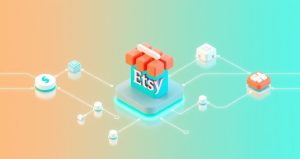Running a successful Etsy shop involves much more than creating beautiful products. It requires managing inventory, marketing, shipping, and customer service. As your business grows, these administrative tasks can become overwhelming. This is where Etsy integrations come into play. These powerful tools connect your shop to external services, automating repetitive tasks and freeing up your time to focus on what you do best: creating. This guide explores the essential types of integrations that can help streamline your operations and scale your creative business effectively.
What Are Etsy Integrations?
Etsy integrations are third-party applications or software that connect directly to your Etsy shop’s data through an Application Programming Interface (API). This connection allows for a seamless flow of information between your shop and the service. For instance, when you make a sale, an integration can automatically send order details to a shipping service or update your accounting software. The primary goal of using these tools is to enhance efficiency, reduce manual errors, and gain better insights into your business performance without leaving the Etsy ecosystem entirely.
Key Categories of Essential Etsy Integrations
Navigating the world of Etsy tools can be complex, but they generally fall into several key categories. Each category addresses a specific pain point for sellers, from getting the product to the customer to managing the finances behind the scenes. Understanding these categories helps you identify which solutions will have the most significant impact on your daily workflow and long-term growth. Focusing on the right integrations ensures you are investing time and resources wisely.
1. Shipping and Fulfillment Solutions
Shipping is often one of the most time-consuming aspects of running an e-commerce store. Etsy shipping integrations simplify this entire process. These platforms import your order information automatically, allowing you to buy and print shipping labels in bulk. They often provide access to discounted postage rates that are not available directly. Once a label is printed, the service automatically updates the order on Etsy with tracking information and marks it as shipped, saving you countless hours of manual data entry.
2. Print-on-Demand (POD) Services
For artists, designers, and creators, print-on-demand integrations are revolutionary. These services connect your Etsy shop with a production partner that handles printing, packaging, and shipping for products like t-shirts, mugs, and posters. When a customer places an order for a POD item in your shop, the integration automatically sends the order to your partner for fulfillment. This model eliminates the need for you to hold physical inventory, reducing financial risk and allowing you to offer a vast catalog of designs.
3. Accounting and Financial Management
Keeping track of your finances is crucial for understanding your shop’s profitability. Accounting integrations connect your Etsy sales data directly to financial software like QuickBooks or Xero. They automatically import sales revenue, Etsy fees, shipping costs, and sales tax information. This automation provides a clear, real-time view of your financial health, simplifies tax preparation, and helps you make informed business decisions based on accurate data rather than guesswork. It transforms a complex task into a manageable one.
4. Marketing and Social Media Automation
Promoting your products is key to driving traffic and sales. Marketing integrations help automate this effort. Some tools can automatically share your new Etsy listings on social media platforms like Pinterest, Instagram, or Twitter. Others help you manage email marketing campaigns by syncing your customer list with services like Mailchimp. These Etsy integrations ensure a consistent marketing presence, helping you reach a wider audience and build customer loyalty with minimal ongoing effort.
5. Analytics and SEO Tools
To succeed in a competitive marketplace, you need to understand what customers are searching for. SEO and analytics integrations provide valuable data to help you optimize your listings. These tools can help you research keywords, analyze trends, and see how your products rank against competitors. By providing insights into which tags and titles are most effective, they empower you to improve your listings’ visibility in Etsy search results, ultimately leading to more views and sales.
How to Choose the Right Etsy Integration
With so many options available, selecting the right tool for your shop is vital. The best choice depends on your specific needs, budget, and business goals. A strategic approach will ensure you find a solution that adds real value.
- Identify Your Biggest Challenges: Start by determining which part of your workflow is the most time-consuming or problematic. Are you spending too much time on shipping? Do you struggle with marketing? Pinpointing your primary pain point will help you focus your search on the integrations that will provide the most immediate relief and benefit.
- Consider Your Budget: Etsy integrations come with various pricing models, from free plans with limited features to monthly subscriptions. Evaluate your budget and determine what you can afford to invest. Many services offer a free trial, which is an excellent way to test the software and see if it fits your needs before committing financially.
- Read Reviews and Seek Recommendations: Look for feedback from other Etsy sellers. Reviews on the app marketplace, forums, and social media groups can provide honest insights into a tool’s effectiveness, ease of use, and quality of customer support. A reliable integration will have a strong positive reputation within the seller community.
- Evaluate Scalability: Think about your future needs. The tool you choose should be able to grow with your business. A scalable solution will support you as your order volume increases and your operational needs become more complex. Ensure the platform offers higher-tier plans or advanced features that you can adopt later on.
The Strategic Advantage of Smart Integration
Ultimately, incorporating Etsy integrations into your business is a strategic move that goes beyond simple convenience. These tools are assets that enable you to build a more resilient, efficient, and scalable operation. By automating the repetitive, administrative tasks, you reclaim valuable time that can be reinvested into product development, customer engagement, and creative exploration. This shift in focus is what separates a hobby from a thriving business, allowing you to build a sustainable brand on the Etsy platform.






